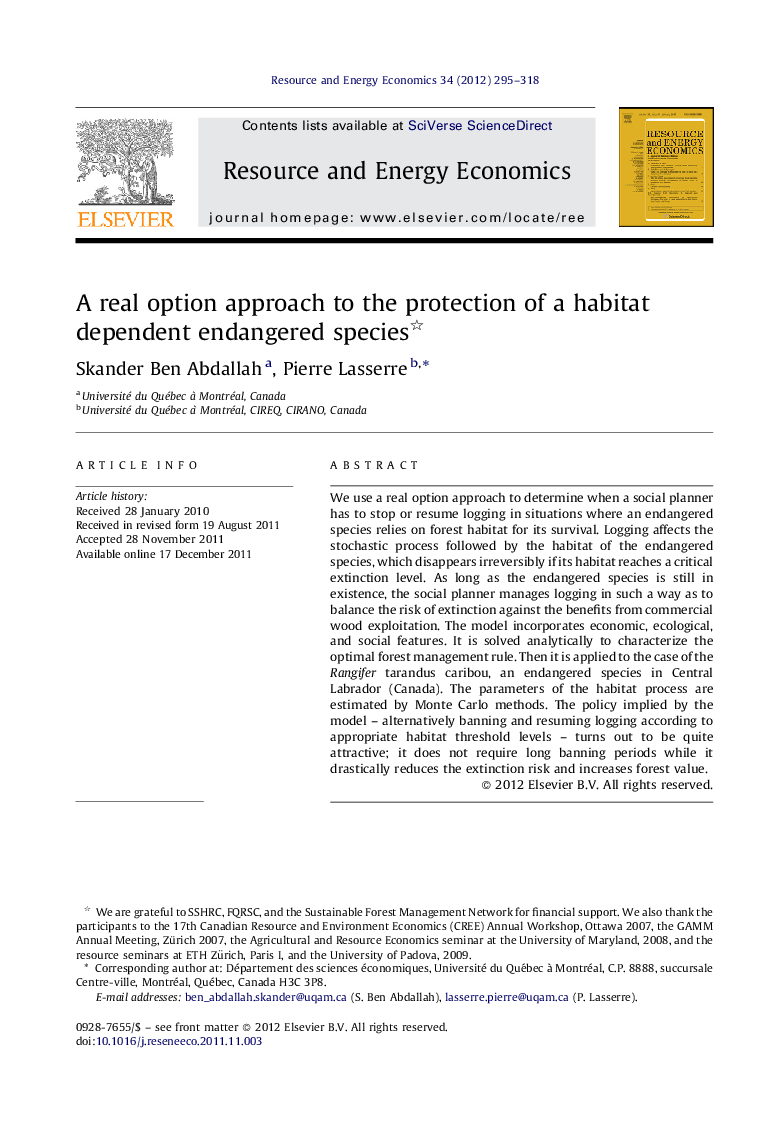| Article ID | Journal | Published Year | Pages | File Type |
|---|---|---|---|---|
| 985455 | Resource and Energy Economics | 2012 | 24 Pages |
We use a real option approach to determine when a social planner has to stop or resume logging in situations where an endangered species relies on forest habitat for its survival. Logging affects the stochastic process followed by the habitat of the endangered species, which disappears irreversibly if its habitat reaches a critical extinction level. As long as the endangered species is still in existence, the social planner manages logging in such a way as to balance the risk of extinction against the benefits from commercial wood exploitation. The model incorporates economic, ecological, and social features. It is solved analytically to characterize the optimal forest management rule. Then it is applied to the case of the Rangifer tarandus caribou, an endangered species in Central Labrador (Canada). The parameters of the habitat process are estimated by Monte Carlo methods. The policy implied by the model – alternatively banning and resuming logging according to appropriate habitat threshold levels – turns out to be quite attractive; it does not require long banning periods while it drastically reduces the extinction risk and increases forest value.
► An endangered species disappears irreversibly if its habitat reaches a critical extinction level. ► Logging affects the stochastic process followed by the habitat. ► We use real options to compute habitat thresholds at which logging must stop or resume, in such a way as to balance the risk of extinction against the benefits from commercial wood exploitation. ► The model is solved analytically; then it is applied to the Rangifer tarandus caribou, an endangered species in Central Labrador (Canada), using Monte Carlo methods. ► The optimal policy does not require long banning periods while it drastically reduces the extinction risk and increases forest value.
